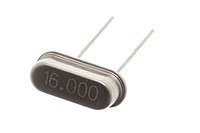
Photo from wikipedia
Welding is a manufacturing process of joining components that is dominant in industries that include civil, oil and gas, automotive, etc. Although it has various benefits, welding still causes residual… Click to show full abstract
Welding is a manufacturing process of joining components that is dominant in industries that include civil, oil and gas, automotive, etc. Although it has various benefits, welding still causes residual stresses to remain in a component after welding. Residual stresses may result in unexpected failure and may worsen mechanical performance. Common methods to measure residual stresses include hole-drilling and X-ray diffraction and are characterized by their lack of reliability and complicated implementation process. In this study, pulsed eddy current (PEC) is introduced as a promising technique to measure subsurface residual stress in welding. First, the PEC method is calibrated and the correlation between signals and known stresses are identified, and then the residual stress in a welded component is estimated, and finally, the residual stresses measured by PEC were compared to the results obtained by the finite element technique.
Journal Title: Journal of Testing and Evaluation
Year Published: 2018
Link to full text (if available)
Share on Social Media: Sign Up to like & get
recommendations!